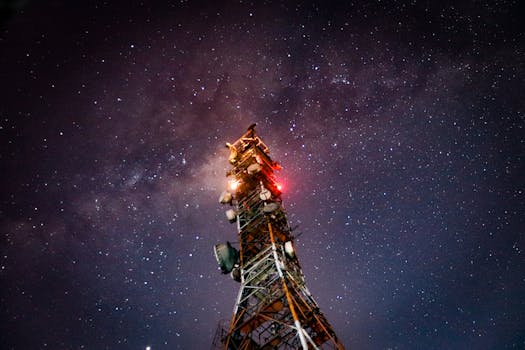
MEO Satellites: Revolutionizing Global Communication with Medium Earth Orbit Technology
MEO satellites, or Medium Earth Orbit satellites, are a type of satellite that operates at an altitude of around 2,000 to 36,000 kilometers above the Earth’s surface. This orbit is higher than Low Earth Orbit (LEO) satellites but lower than Geostationary Orbit (GEO) satellites. MEO satellites are designed to provide a range of services, including navigation, communication, and Earth observation.
The use of MEO satellites is becoming increasingly popular due to their ability to offer faster and more reliable connections than traditional GEO satellites. MEO satellites have a shorter signal delay than GEO satellites, which means that data can be transmitted more quickly. This makes MEO satellites ideal for applications that require real-time communication, such as video conferencing and online gaming.
How MEO Satellites Work
MEO satellites work by transmitting and receiving signals to and from Earth-based stations. The satellites are equipped with transponders, which are devices that receive and retransmit signals. The signals are transmitted to the satellite on a specific frequency, and the satellite then retransmits the signal on a different frequency to the desired location on Earth.
MEO satellites are typically launched into orbit using a rocket, and once in orbit, they use their own propulsion system to maintain their position and altitude. The satellites are also equipped with solar panels, which provide the power needed to operate the satellite’s systems.
Advantages of MEO Satellites
MEO satellites have several advantages over traditional GEO satellites. One of the main advantages is their ability to provide faster and more reliable connections. MEO satellites have a shorter signal delay than GEO satellites, which means that data can be transmitted more quickly. This makes MEO satellites ideal for applications that require real-time communication, such as video conferencing and online gaming.
Another advantage of MEO satellites is their ability to provide global coverage. MEO satellites can be used to provide communication services to remote or underserved areas, where traditional communication infrastructure may not be available. This makes MEO satellites an ideal solution for providing communication services to areas affected by natural disasters or conflict.
Applications of MEO Satellites
MEO satellites have a range of applications, including navigation, communication, and Earth observation. One of the most well-known applications of MEO satellites is the Global Positioning System (GPS), which is a network of satellites that provide location information to GPS receivers on the ground.
MEO satellites are also used for communication purposes, such as providing internet connectivity to remote or underserved areas. This can be particularly useful for areas where traditional communication infrastructure may not be available. MEO satellites can also be used to provide backup communication services in the event of a natural disaster or conflict.
Finally, MEO satellites are used for Earth observation purposes, such as monitoring weather patterns and tracking climate change. MEO satellites can be equipped with a range of instruments, such as cameras and sensors, which can be used to collect data about the Earth’s surface and atmosphere.
Conclusion
In conclusion, MEO satellites are a type of satellite that operates at an altitude of around 2,000 to 36,000 kilometers above the Earth’s surface. They are designed to provide a range of services, including navigation, communication, and Earth observation. MEO satellites have several advantages over traditional GEO satellites, including their ability to provide faster and more reliable connections. They are ideal for applications that require real-time communication, such as video conferencing and online gaming, and can be used to provide global coverage, including to remote or underserved areas.



